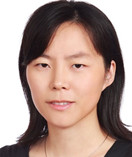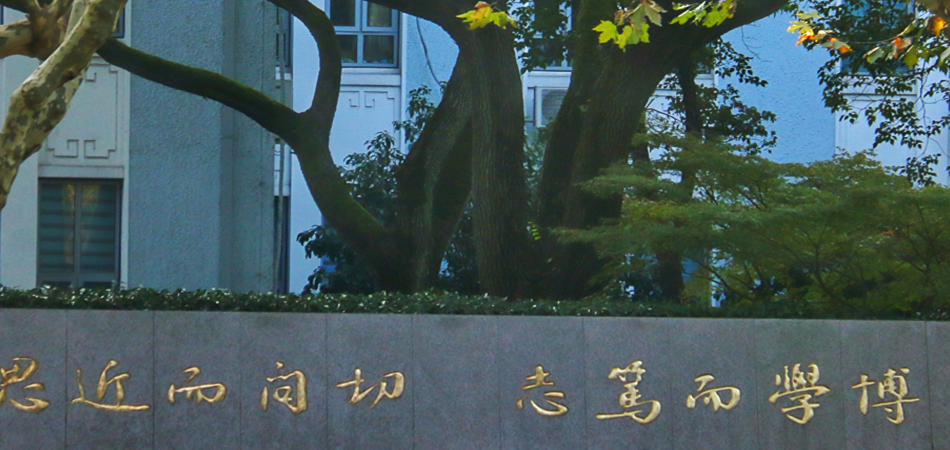
Fengyan Wang
Physical Chemistry
Professor
 fengyanwang@fudan.edu.cn
fengyanwang@fudan.edu.cn
 Room A3001, Chemistry Building, Department of Chemistry, Fudan University 2005 Songhu Road, Yangpu District, Shanghai 200438, China
Room A3001, Chemistry Building, Department of Chemistry, Fudan University 2005 Songhu Road, Yangpu District, Shanghai 200438, China
 86-21-31249129
86-21-31249129
Research Interests
Chemical reactivity of vibrationally or electronically excited molecules
Steric control of bimolecular reactions
Electron transfer dynamics in transition metal chemistry
Prizes and awards
2013, the National Science Fund for Excellent Young Scholars
2012, Shanghai Eastern Scholar award
2011, IAMS Annual Award for Outstanding Publication by a Junior Researcher
2006, European Union Marie Curie fellowship
Biography
1998.9-2002.7 Shandong Normal University, B.S. degree
2002.9-2009.7 Dalian Institute of Chemical Physics, Chinese Academy of Sciences, Ph. D. degree
2006.10-2008.10 Institute of Electronic Structure and Laser, Foundation for Research and Technology, Heraklion;
2008.4-2008.5 the European Laboratory for Non-linear Spectroscopy, Florence;
2008.6-2008.7 Vrije Universiteit, Amsterdam, Ph.D Studies (supported by Marie Curie fellowship).
2009.8-2013.1 Institute of Atomic and Molecular Sciences, Academia Sinica, Postdoc.
2013.1- Department of Chemistry, Fudan University
Teaching
Physical chemistry (dynamics)
Key Publications
Wang, F.; Lin, J. S.; Liu, K.* Steric control of the reaction of CH stretch-excited CHD3 with chlorine atom. Science 2011, 331 (6019), 900-903.
Pan, H.; Wang, F.;* Czakó, G.;* Liu, K.* Direct mapping of the angle-dependent barrier to reaction for Cl + CHD3 using polarized scattering data. Nat. Chem. 2017, 9, 1175-1180.
Li, F.; Dong, C.; Chen, J.; Liu, J.; Wang, F.;* Xu, X.* The harpooning mechanism as evidenced in the oxidation reaction of the Al atom. Chem. Sci. 2018, 9, 488-494.
Li, F.; Ma, Y.; Yan, D.; Xu, A.; Liu, J.; Wang, F.* Imaging the complex-forming reaction dynamics in Al + CO2 → AlO + CO. J. Phys. Chem. Lett. 2022, 13, 11630-11635.
Xu, A.; Ma, Y.; Yan, D.; Li, F.; Song, F.; Zhou, T.; Yuan, Z.; Liu, X.; Liu, J.; Wang, F.* Imaging Spin–Orbit Excitation of Yttrium through High-Energy Collisions with Rare Gas Atoms. J. Phys. Chem. Lett. 2024, 15 (34), 8721-8727.
Xu, A.; Ma, Y.; Yan, D.; Li, F.; Zhou, T.; Liu, J.; Wang, F.* Unraveling Electron Transfer in the Oxidation of Yttrium Metal Atoms: Dual Pathways from Reactive and Nonreactive Imaging. J. Phys. Chem. Lett. 2025, 3998-4005.
Ma, Y.; Li, F.; Yan, D.; Xu, A.; Zhou, T.; Liu, J.; Wang, F.* Unveiling ultraviolet photodissociation dynamics of SiO from a laser-ablated supersonic beam with time-sliced ion velocity imaging. Phys. Chem. Chem. Phys. 2025, 27, 490-497.
Yan, D.; Ma, Y.; Liu, J.; Xu, A.; Song, F.; Zhou, T.; Yuan, Z.; Liu, X.; Wang, F.* Gas-Phase Scattering of Transition Metal Atoms Fe, Ir, and Pt with CH4, O2, and CO2. J. Phys. Chem. A 2025, 129 (4), 978-984.
Li, F.; Yan, D.; Ma, Y.; Xu, A.; Dong, C.; Zhou, T.; Liu, J.; Wang, F.* Correlation Study of the Spin–Orbit State-Resolved Scattering of Al(2P) in Oxidation Reaction and Nonreactive Collision. J. Phys. Chem. A 2023, 127, 9654.
Ma, Y.; Liu, J.; Li, F.; Wang, F.;* Kitsopoulos, T. N.* Roaming Dynamics in the Photodissociation of Formic Acid at 230 nm. J. Phys. Chem. A 2019, 123, 3672-3677.








